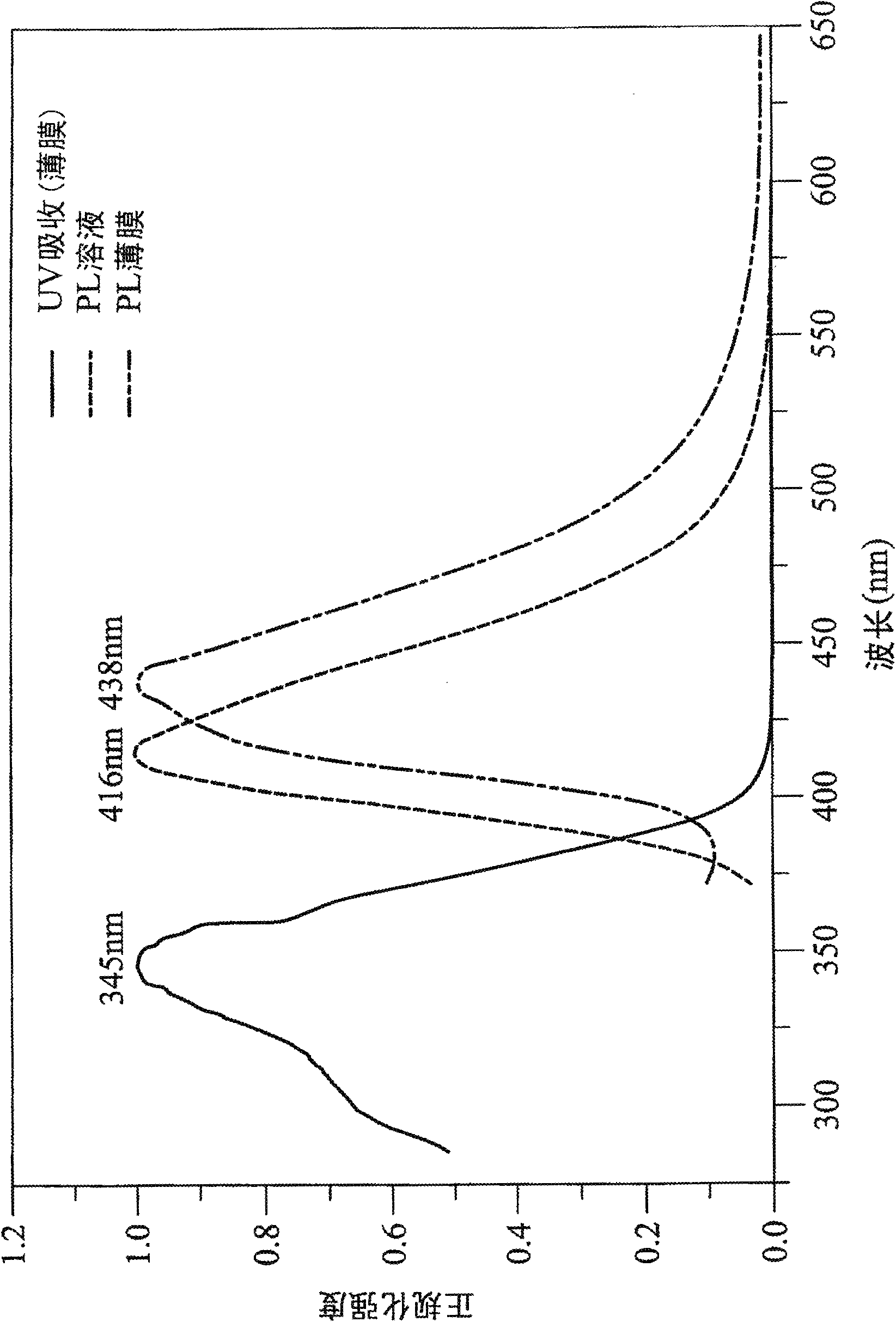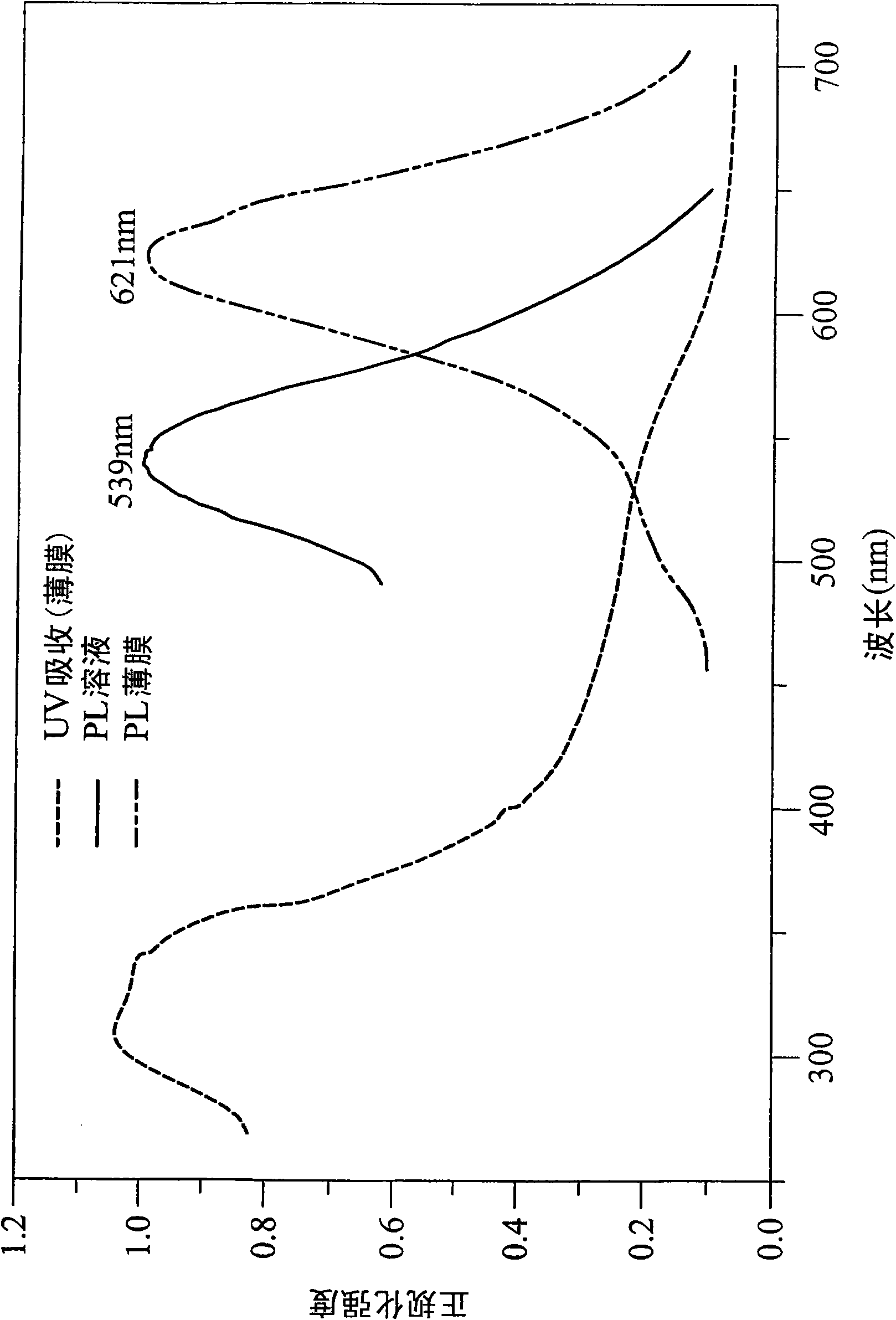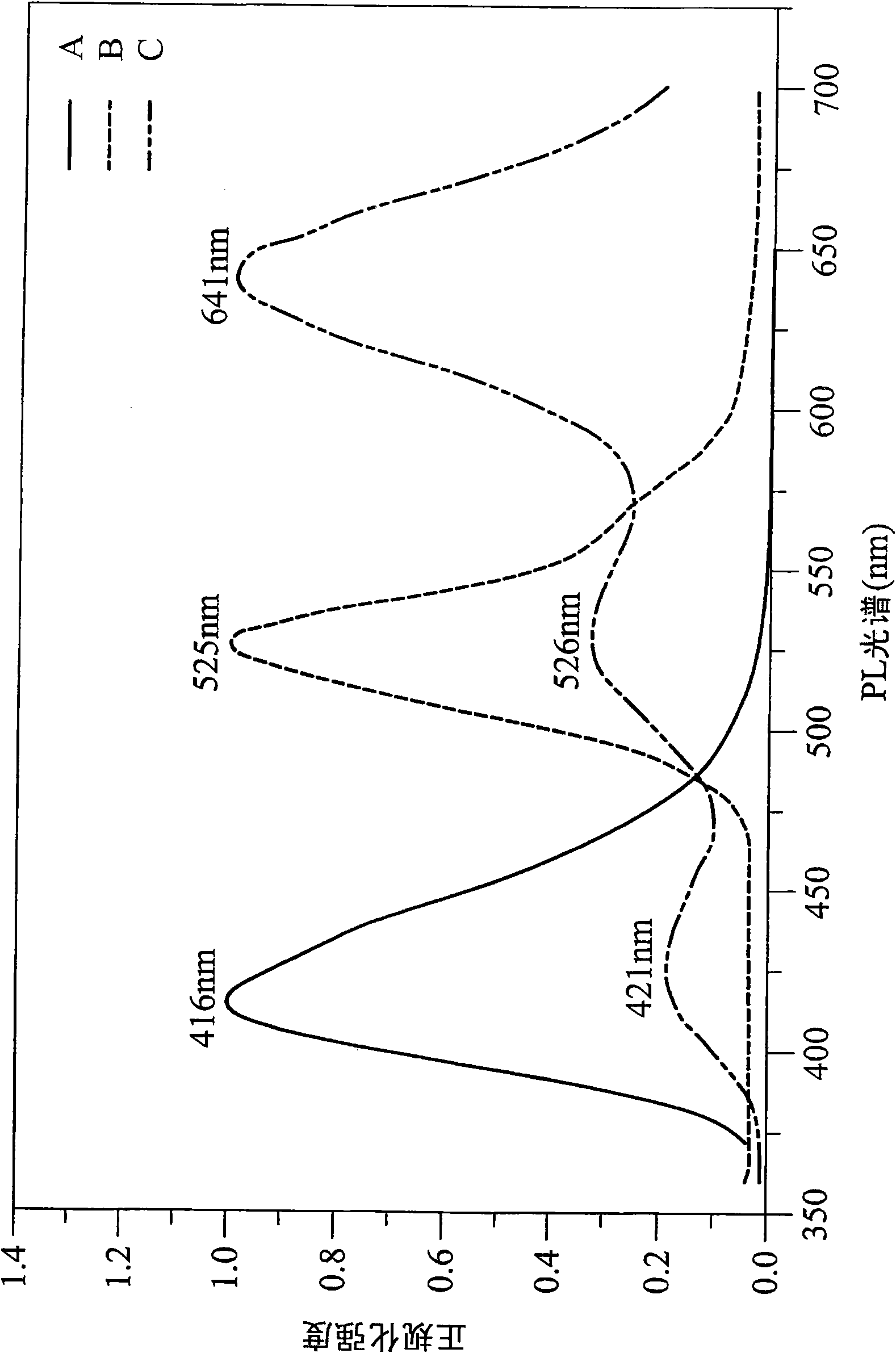Phenanthrene benzene derivative and polymer thereof, copolymer containing phenanthrene benzene derivative and luminous material composition
A technology of phenanthrene benzene derivatives and luminescent materials, which is applied in the field of new phenanthrene benzene derivatives. It can solve the problems of inability to reach deep luminescence wavelengths, poor light stability, and poor photoelectric efficiency, so as to improve photoelectric efficiency and prevent aggregation. , the effect of increasing stability
- Summary
- Abstract
- Description
- Claims
- Application Information
AI Technical Summary
Problems solved by technology
Method used
Image
Examples
Embodiment 1
[0090] [Example 1] Synthetic compound 1
[0091] 9,10: 9,10-bis(cyclopentane)-9,10-dihydrophenanthrene
[0092] (9,10:9,10-bis(cyclopenta)-9,10-dihydrophenanthrene)
[0093] First prepare reactant 1, its reaction formula is as follows:
[0094]
[0095] Mix 2 g of NaOH with 200 ml of methanol and heat to 60°C. After the NaOH is completely dissolved, add 3 grams of phenanthrene-9,10-diketone and 4 grams of 1,3-acetone dicarboxylate (diethyl1,3-acetonedicarboxylate) (manufactured by ACROS, 95%), and maintain 60°C . After reacting for 36 hours, 10% HCl aqueous solution was added to neutralize the precipitate and filter it. The collected precipitate was dissolved with acetic acid, and then 300 ml of 10% HCl aqueous solution was added, and the reaction was heated for 18 hours. Acetic acid and water were removed, neutralized with aqueous sodium bicarbonate solution, and the precipitate was separated by filtration to obtain the product of reactant 1 with a yield of 17%.
[0...
Embodiment 2
[0100] [Example 2] synthetic compound 2:
[0101] 9,10:9,10-bis(cyclopenta)-2,7-diboron-9,10-dihydrophenanthrene (9,10:9,10-bis(cyclopenta)-2,7-diboron- 9,10-dihydrophenanthrene)
[0102] Its synthetic reaction formula is as follows:
[0103]
[0104] Dissolve 2 grams of compound 1 in 20 ml of dichloromethane (DCM) solvent, then add 20 ml of acetic acid solvent, drop 3 grams of bromine water (Br 2 , manufactured by Lancaster Company), stirred at room temperature for three hours to obtain a white crystalline solid product with a yield of 75%.
[0105] Under nitrogen, 6.66 g of bis(4,4,5,5-tetramethyl-1,3,2 dioxyboron) (Bis(pinacolato)diboron) (manufactured by Boron molecular company) and 5 g of the above-mentioned white crystals were dissolved In 100ml of toluene (TEDIA) solvent, add 4.72 grams of potassium acetate (J.T, Baker, 98%) and 0.1 gram of dichloro[1,1'-bis(phenylphosphino)phenanthrene]palladium(II) dichloromethane Adduct (Dichloro[1,1'-bis(diphenylphosphino)fer...
Embodiment 3
[0106] [Example 3] synthetic compound 3:
[0107] Bromo-2-ethylhexyloxy-methylbenzene bromo-(2-ethylhexyloxy)-4-methylbenzene)
[0108] Its synthetic reaction formula is as follows:
[0109]
[0110] Get 17.5 grams of 2-bromo-4-methyl-phenol (2-bromo-4-methylphenol, 1eq, Alfa Aesar, 98%) in a three-neck reactor, add 250ml of acetone (acetone, J.T.Baker), feed nitrogen heating Stir at reflux. Add 26 g K 2 CO 3 (2eq, SHOWA) and 0.4 grams of 18-crown-6 (18-crown-6, 0.015eq., Lancaster, 99%), after 10 minutes, 23 grams of 2-ethylhexane bromide (1.2eq.Aldrich , 96%) reacted for 28 hrs and left to cool, filtered the filtrate, and removed most of the solvent with a rotary evaporator (rota-vapor). Extract with absolute ethanol (EA, Mallinckrodt Co.), NaOH (aq, Aldrich) and deionized water twice to remove ions, then add MgSO 4 (Aldrich), filter the filtrate to remove the solvent with a rotary evaporator, set up a vacuum distillation device, remove the remaining 2-ethyl hexane ...
PUM
 Login to View More
Login to View More Abstract
Description
Claims
Application Information
 Login to View More
Login to View More - R&D
- Intellectual Property
- Life Sciences
- Materials
- Tech Scout
- Unparalleled Data Quality
- Higher Quality Content
- 60% Fewer Hallucinations
Browse by: Latest US Patents, China's latest patents, Technical Efficacy Thesaurus, Application Domain, Technology Topic, Popular Technical Reports.
© 2025 PatSnap. All rights reserved.Legal|Privacy policy|Modern Slavery Act Transparency Statement|Sitemap|About US| Contact US: help@patsnap.com



